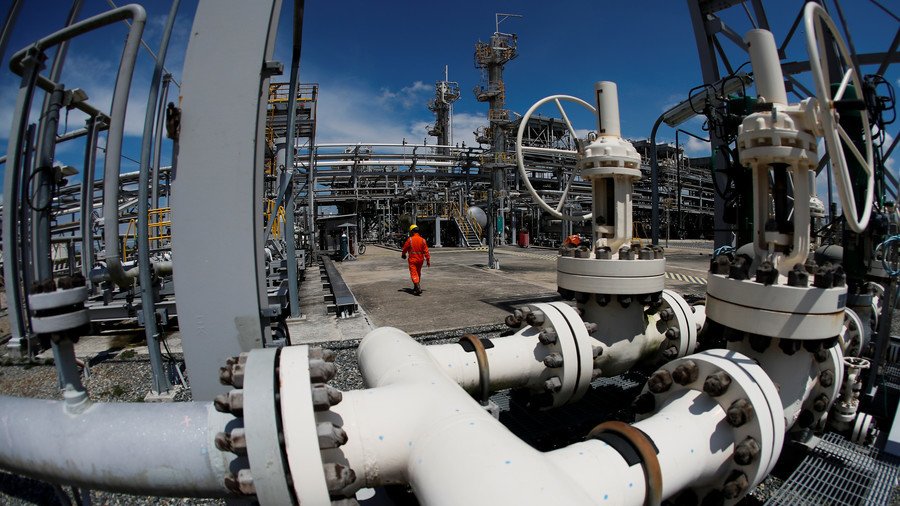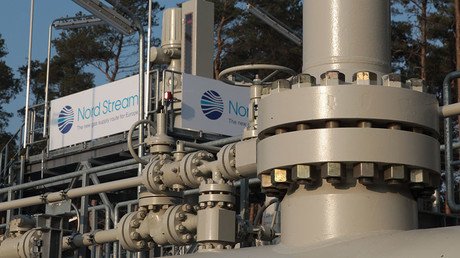Russia just won big in the European gas war

There’s been a lot of talk on both sides of the Atlantic about the US pivot and efforts at locking in natural as market share in Europe.
Much of this comes amid President Donald Trump’s so-called American energy independence push as well as both US and several EU members thrust to wean Europe off of geopolitically charged Russian gas.
In fact, Trump has pushed for US-sourced LNG to become so much of the EU’s energy security that several European states, particularly Germany, have accused the president of playing energy geopolitics, cloaking American concern for European energy security under the guise and to the benefit of US LNG producers.
Now, however, Trump and US LNG exporters will have an even harder time convincing key EU members to offset overreliance on Russian piped gas with US LNG.
Last week, Gazprom, the world’s largest gas producer, and the European Commission resolved a seven-year anti-trust dispute after the Russian state-controlled energy giant agreed to change its operations in central and Eastern Europe.
Per terms of the deal that was reached on Thursday, Gazprom will be banned from imposing restrictions on how its customers in central and Eastern Europe use gas. Meanwhile, Bulgaria, the Czech Republic, Estonia, Hungary, Latvia, Lithuania, Poland and Slovakia will no longer be banned from exporting gas to another country.
These countries originally sought to remedy over pricing problems for Russian gas. Going forward, customers in Bulgaria, Estonia, Latvia, Lithuania and Poland have the right to demand a price in line with those in Germany and the Netherlands.
The deal has teeth since these customers can take their complaints to an EU arbitration body if Gazprom fails to live up to terms of the new settlement.
Russian victory
It’s a win situation for Gazprom since its agreement avoids billions of dollars in penalties that could have been levied by the European Commission; while it also helps the firm solidify its hold on European gas markets.
It’s also a victory for Russia overall which has seen several LNG players, notably Qatar and the US, vie for market share at the expense of Russian gas producers. Even before the Gazprom deal, it would have been hard for US producers to take significant market share in Europe away from Russia, mostly due to pure energy economics.
Commodities data provider S&P Platts Global said on May 11 that US LNG was still a rare visitor to European shores despite low LNG stocks - especially in northwest Europe - and high European hub prices. Just three US LNG cargoes have landed in Europe since the turn of the year.
Simply put, Russian pipeline gas is already a cheaper commodity for EU end users than imported US-sourced LNG since liquefaction and transportation charges have to be added. However, US LNG since is indexed to Henry Hub gas prices on the NYMEX it’s considerably lower than other LNG producers that want to enter Europe since most other LNG cargoes have a higher cost oil-price indexation formula.
The European Commission finding also comes as Washington turns up the heat on the EU to scrap Russia’s Nord Stream 2 gas pipeline project that could be operational as early as the end of next year.
The Nord Stream 2 pipeline has been a source of contention for over a year, pitting the US and a small number of European countries, including Poland, the Ukraine, Lithuania and others, on one side against Russia and other major EU members, led by Germany.
Nord Stream 2 includes a 759 mile (1,222 km) natural gas pipeline running on the bed of the Baltic Sea from Russian gas fields to Germany. It would double the existing Nord Stream pipeline’s current annual capacity of 55 bcm and is expected to become operational by the end of next year.
Former-US Secretary of State Rex Tillerson said in January that the pipeline is "not a healthy piece of infrastructure" for Europe's energy stability. Germany, for its part, has pushed back against this claim as has Russia who stands the most to lose if the pipeline project is not completed.
Sandra Oudkirk, US Deputy Assistant Secretary of State for Energy diplomacy, said two weeks ago the US is worried the pipeline could open ways for Russia to install undersea surveillance equipment in the Baltic Sea.
Coming full circle
After the European Commissions’ announcement over its Gazprom decision was reached in Copenhagen on Thursday, a US envoy pleaded for Europe to consider carefully who it’s relying on for gas, urging Europe both to take more LNG and to scrap the Nord Stream 2 pipeline that would give Russia a pipeline route to Germany that avoids countries like Ukraine that rely on transport revenue.
“What price freedom?” Dan Brouillette, deputy US energy secretary, told reporters in Copenhagen. “That’s an important concept. We’re talking energy security and not so much economics here.”
But for now, it seems that Europe, though it has been caught in the crosshairs of Russia’s geopolitical maneuverings in the past when Moscow cut off gas supplies to Europe to push its own agenda, sees economic considerations and a stubborn short-sited energy policy over regional energy security concerns.
Bulgaria wants direct natural gas pipeline from Russia https://t.co/1XLQR0ZS91
— RT (@RT_com) May 22, 2018
Gazprom's victory comes as Russia already sees its grip on European gas markets increase to record levels. The company already has a monopoly over Russia’s network of pipelines to Europe and supplies close to 40 percent of Europe’s gas. Meanwhile, Russia's gas exports to Europe rose 8.1 percent last year to a record level of 193.9 billion cubic metres (bcm), even amid concerns over Russia’s cyber espionage allegations, and its activities in Syria, the Ukraine and other places.
With Russia’s vast natural gas pipeline network in place bringing gas from is massive fields to EU markets and with the advantage of pricing and even the geopolitical advantage since most EU members see US-sourced gas as a tool of the Trump administration, Russian gas and the lack of energy security that accompanies that supply will remain a reality in both the mid to long-term.
This article was originally published on Oilprice.com
















